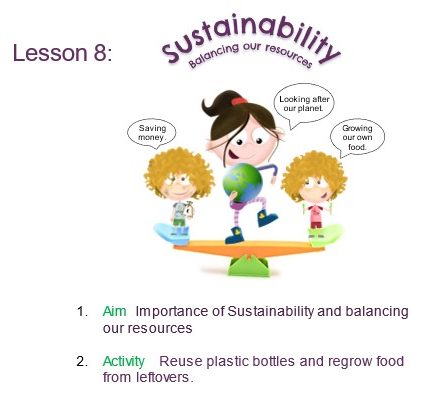
Zoe Harland, Belly Bugs Curriculum Writer, BSc, PGCE Science, ANutr
Why teach children about their gut microbiome?
Around 60% of calories consumed by children in the UK are from ultra processed food. This has been directly linked to declining physical and mental health for children. Over 10% of reception age children (age 4-5) have obesity, and this more than doubles to 23% by the time they leave primary school. With an additional 27% of adults with obesity, the estimated annual cost to the NHS in England is over £5 billion. The food Foundation’s Broken Plate 2023, highlights in their outcome metrics how children in the most deprived groups of the population are twice as likely to be living with obesity compared to the least deprived by their first year of school. These health inequalities also affect young children’s height and tooth decay. Such reports highlight the urgency in finding new ways to address these issues.
With the aim of wanting to improve child health, more evidence is pointing to the importance of looking after our gut microbiome and how what we eat directly affects this. Current research reveals our gut microbiome is significantly linked to our physical and mental wellbeing. Seeking to protect this as early as possible is essential. How we were delivered, whether we were breast or bottle fed, and if we grew up around pets or not are important; all these and more contributed to our initial gut microbiome. This was believed to mature to an adult-like gut microbiome around 3-5 years, however, recent studies are suggesting that the gut microbiome may develop more slowly than originally thought and that children’s microbiota might be more maleable to environmental factors than adults. Research also reveals how reduced microbial diversity can lead to illnesses in infants or diseases seen at later stages of life, including asthma, inflammatory bowel disease, and metabolic disorders. The gut microbiome also has a connection to the brain via the gut brain axis affecting our mood and memory and regulating the immune system.
Unlike the genes we inherit, we have control over our gut microbes, and it is something we should be teaching our children.
The birth of the Belly Bugs
The Belly Bugs were created by Dr David Bell. This groundbreaking story had been in the making previously but the Belly Bugs name was established in 2019. Billie Pickle, the main character, is a typical 8-year-old girl who has an amazing story to tell. She introduces children to the wonderful world inside them where their Belly Bugs live, some of the best friends they will ever make! Martin Smith, our illustrator, brought the Belly Bugs to life with his beautiful artwork.
In January 2020, I had completed an MSc in Human Nutrition and finished an internship at Kings College London with Professor Tim Spector’s Twins UK team. Having assisted a PhD student with organising some of the Predict 1 data, meeting and shadowing doctors and nurses looking after the twins, and extracting DNA in the labs from blood and fecal samples, I was fascinated with the gut microbiome and what the latest research was revealing. I first saw the Belly Bugs in August 2020 on David’s Instagram and a Zoom meeting quickly followed. As a qualified teacher of Key Stage 1 to Key Stage 4, I had written many science lessons and school curricula, and I was impressed with David’s Belly Bug story. I knew these characters would be perfect to teach primary school children about their gut microbiome in a fun and simple way. I looked at the latest research and built 8 lessons aimed primarily at Key Stage One (KS1). Recognising all children in primary would benefit from learning this I then developed the KS2 programme and the Early Years Foundation Stage (EYFS) curriculum soon followed.
Our aim is to teach young children all about their friendly gut microbes we call their Belly Bugs. The Belly Bugs are the beneficial microbes in our gut that produce many vital products like a pharmacy, including vitamins, such as B9 (folate), B12 and B6, short chain fatty acids (SCFA) such a Butyrate, which reduces inflammation and reinforces the epithelial defence barrier and many more. Through fun practical lessons we encourage them to look after their Belly Bugs by growing and eating more plant foods and to get enough sleep and exercise.
The lessons in our pilot are available for the whole of primary school, from EYFS through KS1 to KS2. Teaching children in a school environment means all children, regardless of economic background, have a chance to learn how to look after their Belly Bugs. Throughout the lessons, care to include frozen, tinned, and dried fruit and vegetables, as well as fresh, has been made.
There are two main reasons we wanted to teach young children about their gut microbiome:
- For childhood physical and mental health. A diet of mainly processed foods has been linked to poor physical and mental health, due to the devastating effect on our gut microbiome.
- The Belly Bugs answers the important question: ‘Why should I eat fruit and vegetables, exercise and get enough sleep?’ Adults have been telling children to eat healthier for years but often without explaining why.
Unless we address these issues and teach children as young as possible, it will be difficult for children to change habits and lifestyles.
Our hope is that this would be taught in all primary schools so that children learn the importance of looking after their own microbes, enjoy growing and cooking healthy food, and making good life choices.
What are the Belly Bug lessons?
Each lesson is backed by the latest scientific research. The lessons are cross curricular with links to current assessment in Personal, Social, Health and Economic (PSHE) lessons, as well as Science, English, Maths and Art. Most of the lessons are practical and encourage the children to grow, prepare and eat fruit and vegetables.
The first 3 lessons are based on the children getting to know the Belly Bugs and this is important because we hope that caring for their Belly Bugs will lead to behaviour change.
Lesson 1: ‘The Secret world inside us’ teaches children who their Belly Bugs are, where they live and how to look after them.

Teaching plan for Lesson 1. All the teacher’s plans have this format and there are 8 lessons.
Lesson 2: ‘The Big Discovery’ shows how scientists can see them, so we know they are real.
Lesson 3: ‘Prof Spector’s Lab’ explains how we all have our own unique sets, even identical twins.
Lessons 4 and 5: ‘Rainbow Food’ and ‘Fab Fibre and Perfect Poo,’ teach that the Belly Bugs need us to look after them by eating more fruit and vegetables.

The aim and activity for Lesson 4 ‘Rainbow Food.’

The game in lesson 4 from KS2 reminding children about different coloured fruit and vegetables.
Lessons 6 and 7: ‘The Gut Brain Connection’ and ‘Junk Food Warning,’ explains the importance of getting enough exercise and sleep and having less junk food.
Lesson 8: ‘Sustainability,’ teaching us how to regrow food for free so we can look after our outside world while our Belly Bugs look after our inside world. The learning continues outside the classroom and into the dinner hall with colourful posters of the school dinners with the Belly Bugs using the vegetables in the meals. Homework is included so that parents and carers get to see what the children are learning and can support them, so the learning continues out of school as well. There are many resources including catchy songs, a trailer, banners, posters, and recipes for children to enjoy.

The aim and activity for Lesson 8 ‘Sustainability.’

Healthy Bites: simple recipes for children to follow using sustainably grown vegetables.
Below is the trailer teachers show children before they start the lessons:
Following these 8 lessons, we hope children will know the following 4 knowledge goals:
- They will know that looking after their Belly Bugs means a healthy body and mind.
- They will know that eating a variety of different coloured fruit and vegetables will feed their Belly Bugs, who help keep us healthy and happy.
- They will know that each person’s group of Belly Bugs are individual and determined by what we eat and how much we exercise and sleep.
- They will know the importance of swapping junk food for healthy food.
Benefits so far?
Dr Kelly Rose (RNutr, Public Health Advanced Practitioner) introduced us to Karen Lightfoot Gençli, the Public Health Practitioner for Sunderland Council in 2022.
Karen reached out to primary school head teachers for interest in taking part in our initial Belly Bug pilot offered to the first schools to reply. Within minutes schools were responding, and very quickly we had 12 schools keen to start the program. We selected 6 to start from January this year, with the other 6 starting later in the year.
Before the lessons, teachers gave the children a short questionnaire to find out if they ate fruit and vegetables and if they thought these foods were healthy or not that important. We then asked teachers to give children another short questionnaire after the lessons to see if they had changed their attitude towards fruit and vegetables and if they had understood the Belly Bugs message.
The results were amazing. Teachers liked the lessons and children enjoyed learning all about their Belly Bugs.

Feedback from the Belly Bugs
In one infant school eating fruit and vegetables daily rose by 71%!

Questionnaires given to children before and after the lessons to see if there are any changes in attitude towards fruit and vegetables
With these positive outcomes, Sunderland Council commissioned an independent Research consultancy to evaluate a second Belly Bugs Pilot in Sunderland.
Seven schools were selected to join the pilot study with ages ranging from EYFS through KS1 to KS2. This pilot started this year on October 2nd and will be completed by January 2024.
Child health is a growing public concern and encouraging children to swap ultra processed food and enjoy eating more fruit and vegetables is key. With the greatest issues linked to more deprived areas and amid increasing food insecurity, teaching children this important message in schools is essential. Care is taken to not label any food “bad,” and the emphasis is on increasing fruit and vegetable consumption in all forms (fresh, frozen, tinned, dried) whilst ensuring all the learning is fun and exciting, encouraging children to grow, cook and enjoy eating healthy food.
Following the Independent research consultants’ results and recommendations, we hope to complete the Belly Bug curriculum and roll it out in more schools throughout the country.
Find out more about the Belly Bugs.







That’s a great programme and an intelligent and interesting way to teach the children how to eat healthy and hopefully the parents, too.
Thank you Gabriela. We have had a great response from children and teachers who have run the Belly Bugs curriculum and we hope to get parents more involved soon too.
This teaching will be so valuable to our children especially from a very young age & is long over due. Thank for making it fun & simple for them to understand. I hope every school in the country will join. Then we will have all our children grow up to be healthy & well adults. Then they can teach their children too. Well done, what a great programme. All adults would do well to follow it too! Congratulations!
Thank you so much Jill for your kind comments. We agree with you that we hope all primary schools will use The Belly Bugs curriculum to show children how much fun growing and cooking plants are and making healthy choices.
We believe teaching about their gut microbiome young is vital so they have a better chance to grow up to be healthy & well adults.
This is insightful. An amazing way of making children have positive attitude towards the consumption of fruits and vegetables.
Hi Abimbola,
Thank you for your comments. The evaluation on our Pilot in schools in Sunderland will be out soon. We hope it shows that teaching children about their gut microbiome in a fun positive way leads to a higher consumption of fruits and vegetables and a healthier way of living.
This is a wonderful essential programme that I believe should be and will be in every school, included as a mandatory part of curriculum. I am proud to have been even a tiny part of getting this into schools, and know it will make a huge impact as part of a whole systems change in the way we view nutrition and our health. David and Zoe are two of the most warm, passionate and talented people I have ever met!
Thank you Kelly for your great comments. We would not be where we are today without your constant support! You introduced us to Sunderland Council where Karen has been amazing in getting the Belly Bugs into schools and arranged the current evaluation in 7 schools by Caja. You have connected us to so many important people like Dr Jason O’Rourke (taste Ed) and Kate Stephenson. We also have 2 schools in County Durham running the Belly Bugs in their whole school.
You share our passion in getting this in every school and on the curriculum and we are so grateful for your drive and enthusiasm in sharing The Belly bugs message.
I love this so much! I currently work at 2 primary schools (1 state and 1 Private) I wanted to send the info to the headteachers. Is there a way I can send the lesson plans and resources to them?
Hi Linda,
Great to hear you love the Belly Bugs and want to share it with your headteachers.
As we are currently running an evaluated Pilot in Sunderland in 7 schools, all the teaching resources require a password.
If you email me, I can send the password to you 🙂
zoe@bellybugs.co.uk
This is very insightful and I would love to get a slide if there’s any for this to aid my social media awareness to the public on the essentiality and how parents can play a part in ensuring their kids choose wisely.
Thank you for sharing this information.
Hi Rashidat,
That’s great that you want to share about the Belly Bugs on social media and I agree it’s so important parents know about them and how these resources and lessons can help children make healthy choices.
Please share our website, bellybugs.co.uk (there is also a link at the end of my blog) and you can find me on zoe.nutrition on Instagram. If you needed anything else please email me and I might have more I can send you 🙂
zoe@bellybugs.co.uk
In the context of teaching children about their gut microbiome, could you elaborate on specific strategies or educational approaches that can be employed to make this information accessible and engaging for children? Tel U
Hi Teknik Elektro,
We have a first introduction year curriculum for all primary school children form EYFS to KS2 that is free.
Please see our website bellybugs.co.uk
contact me on this email if you want to know more
zoe@bellybugs.co.uk